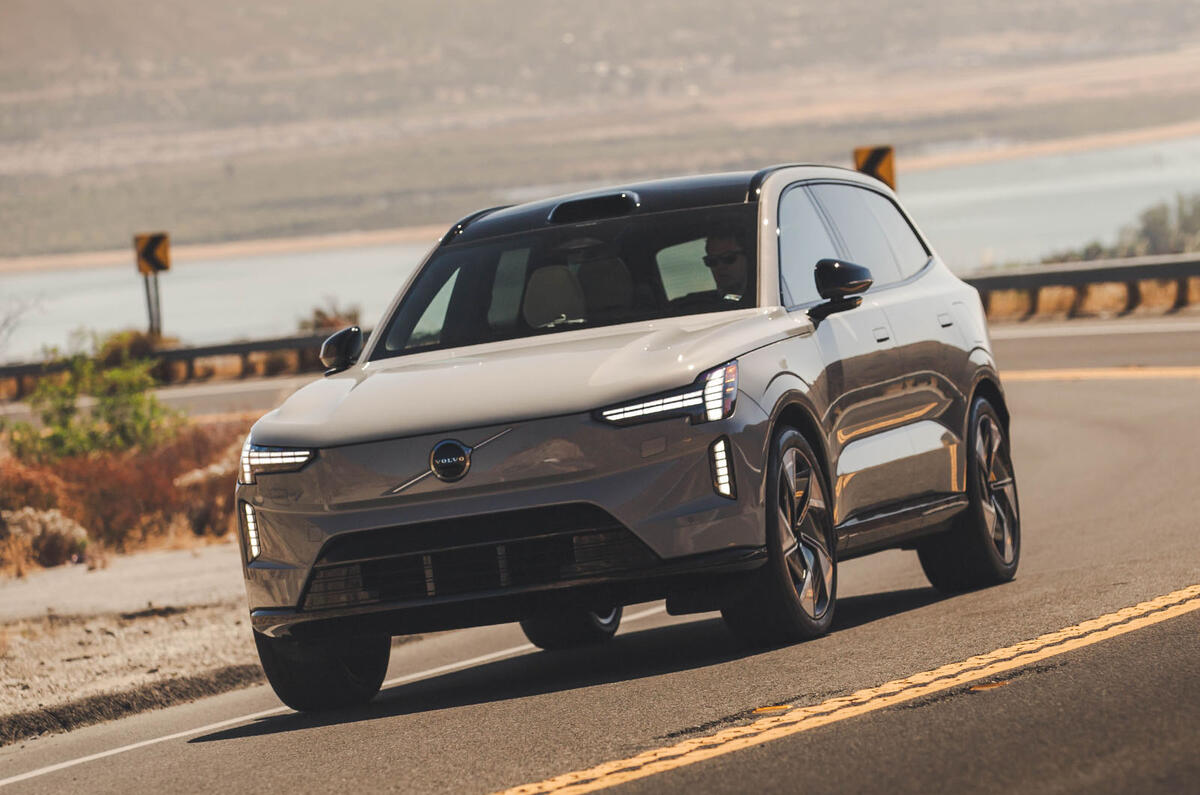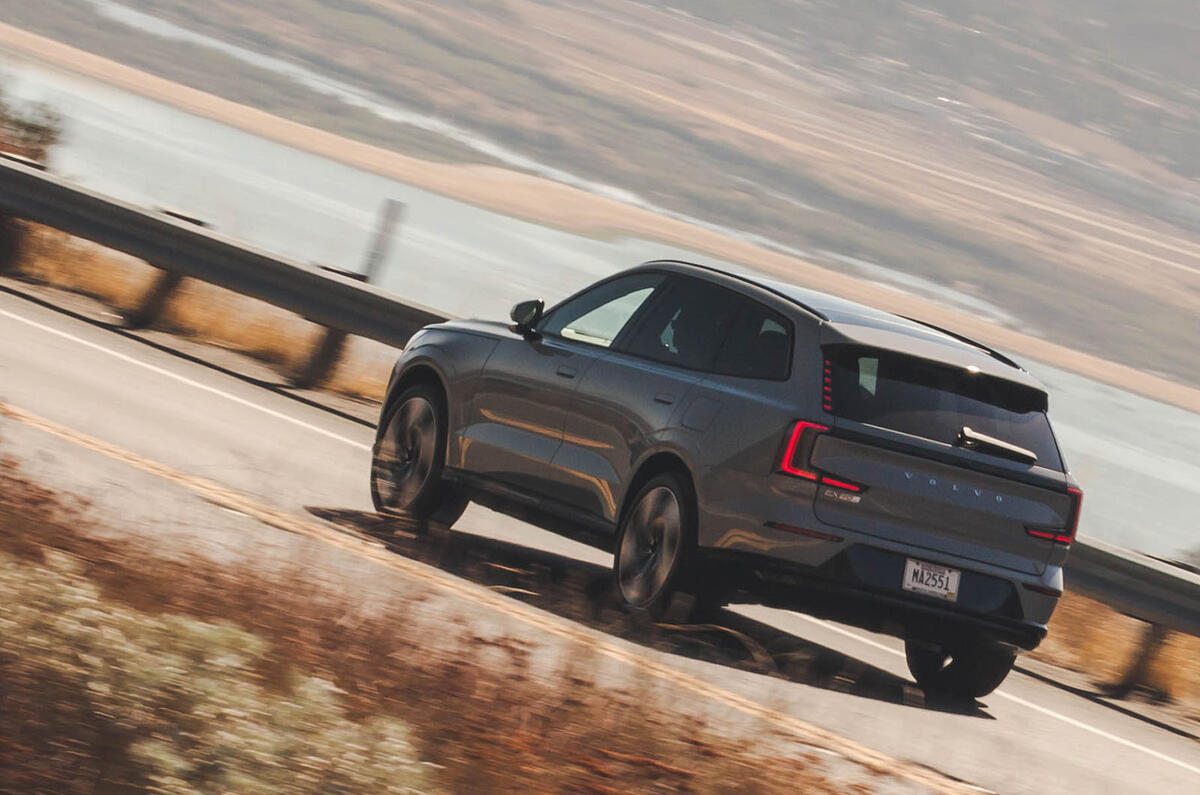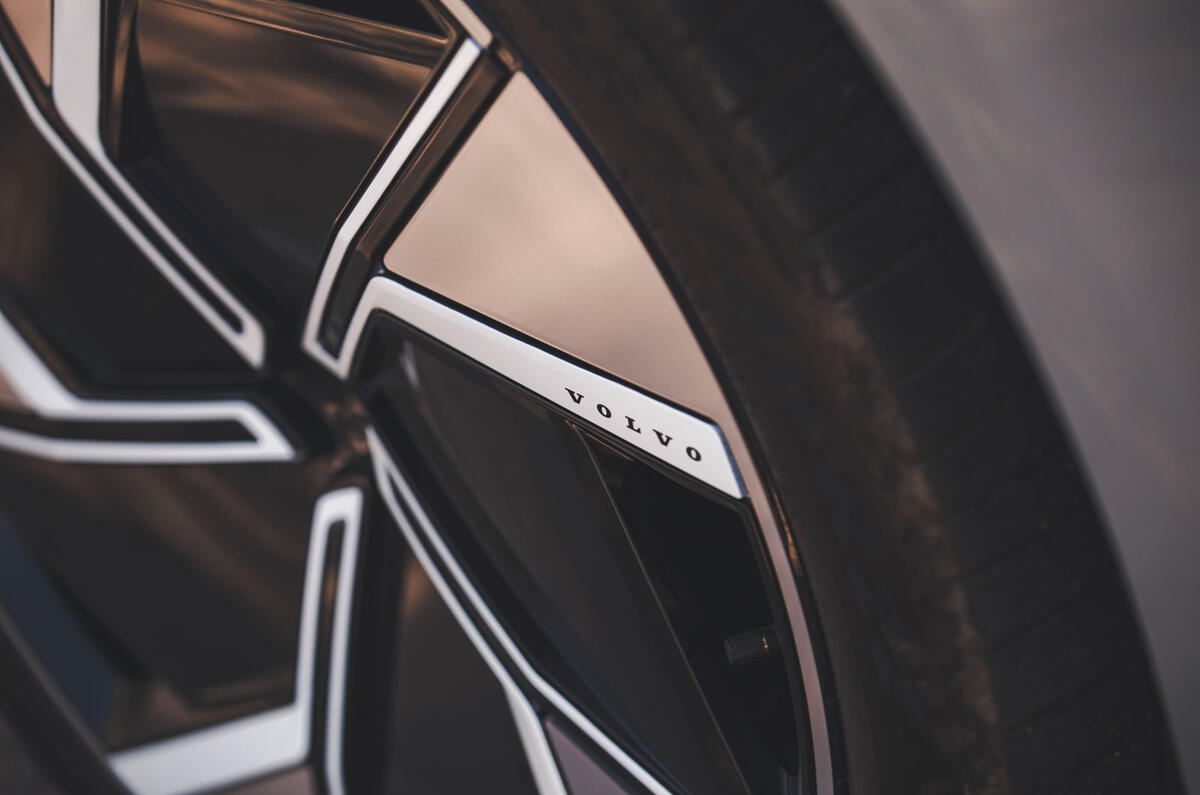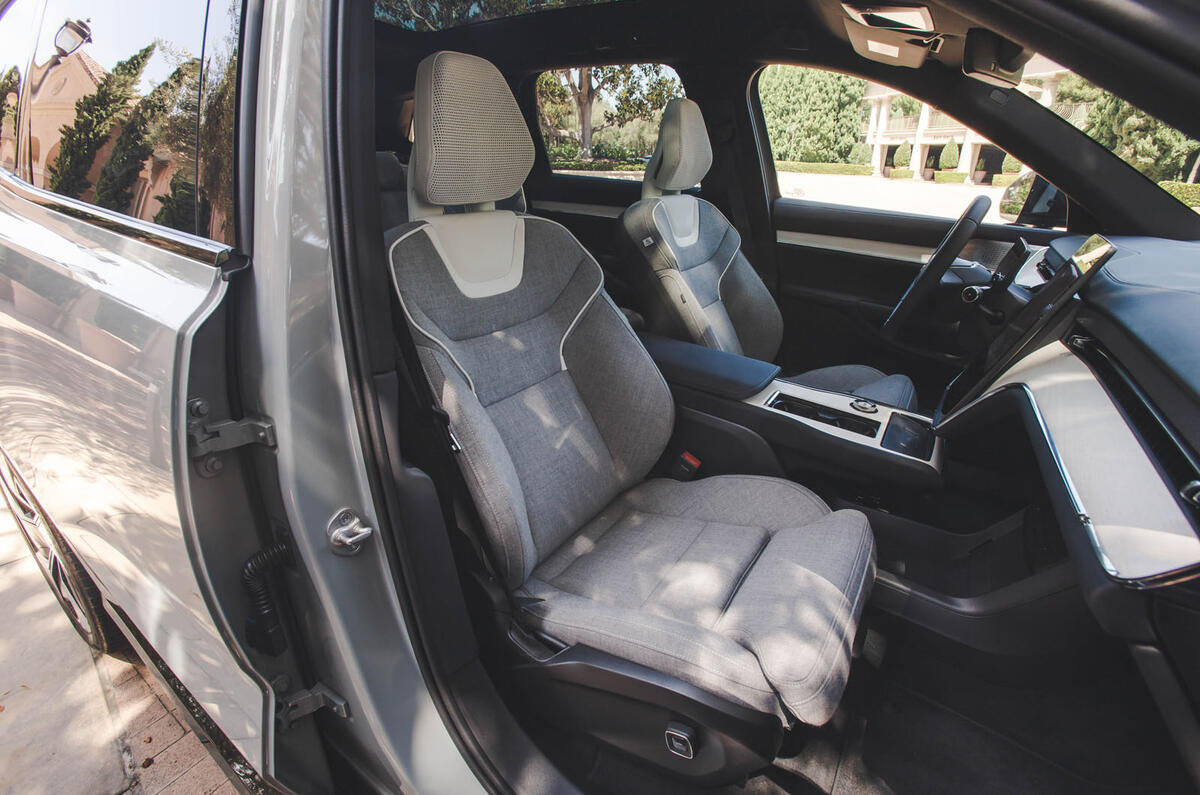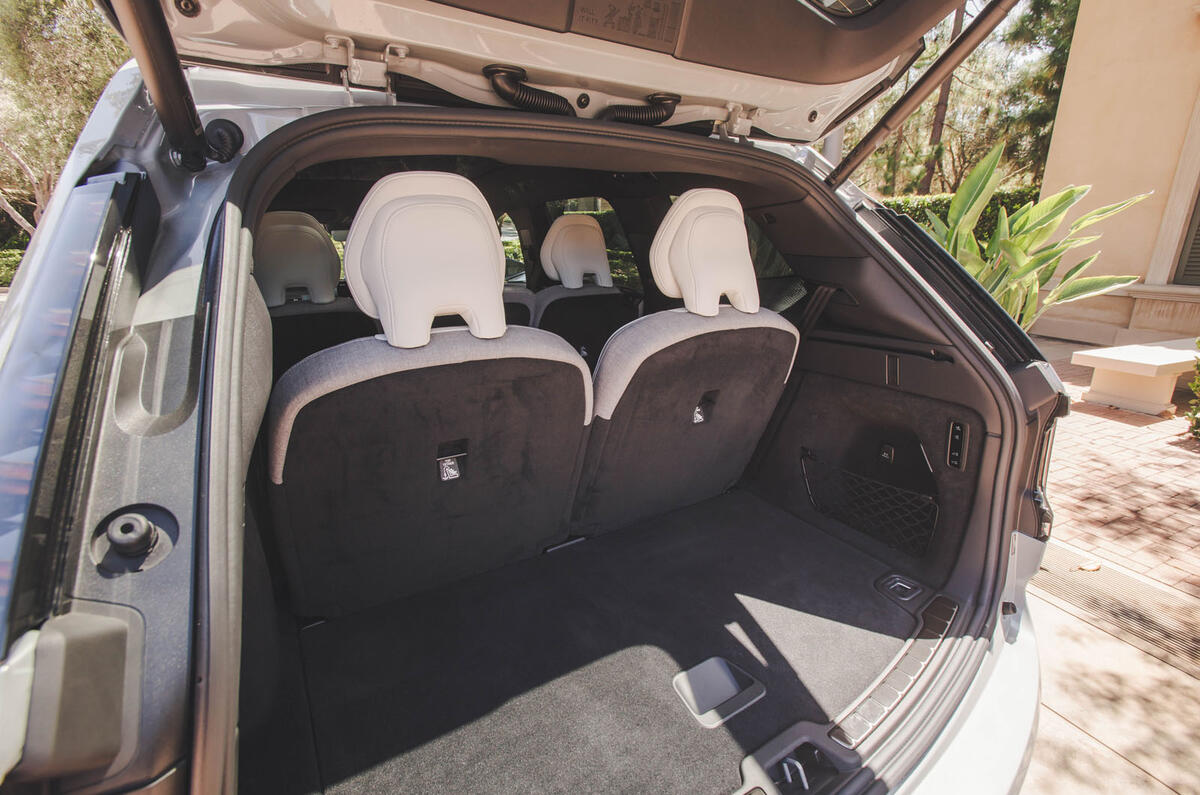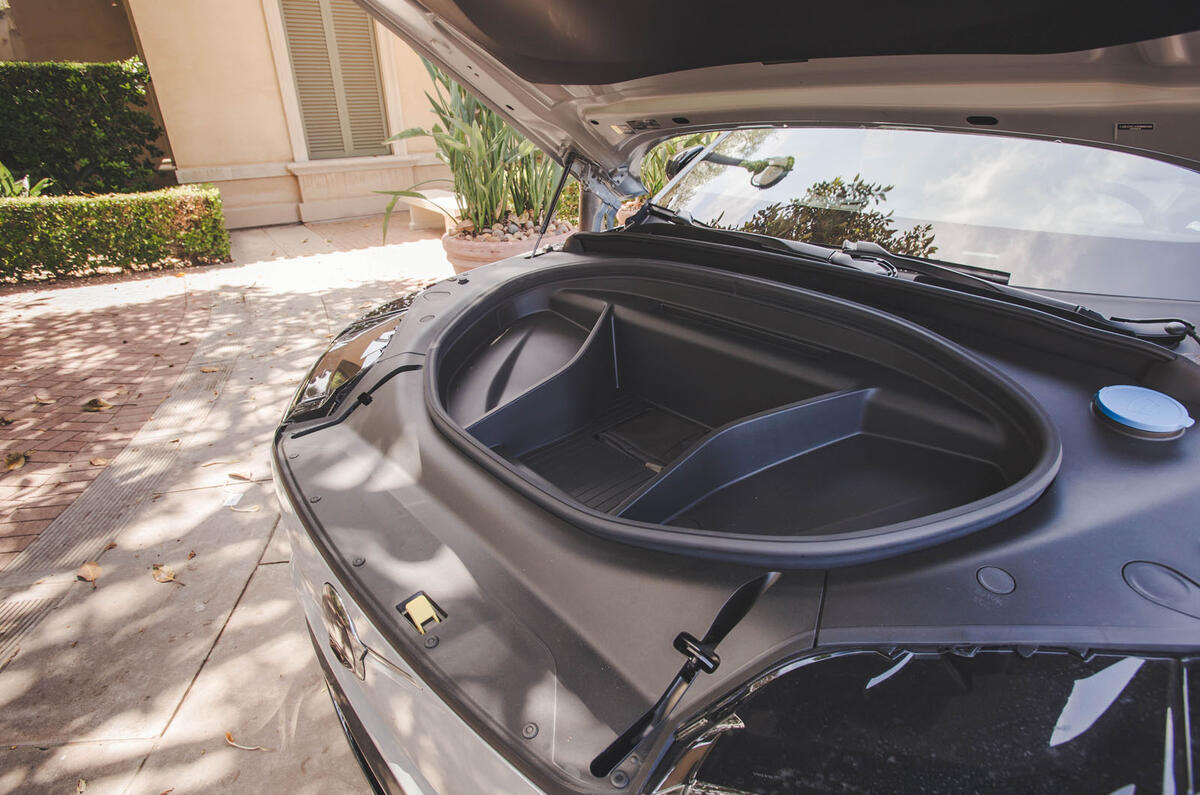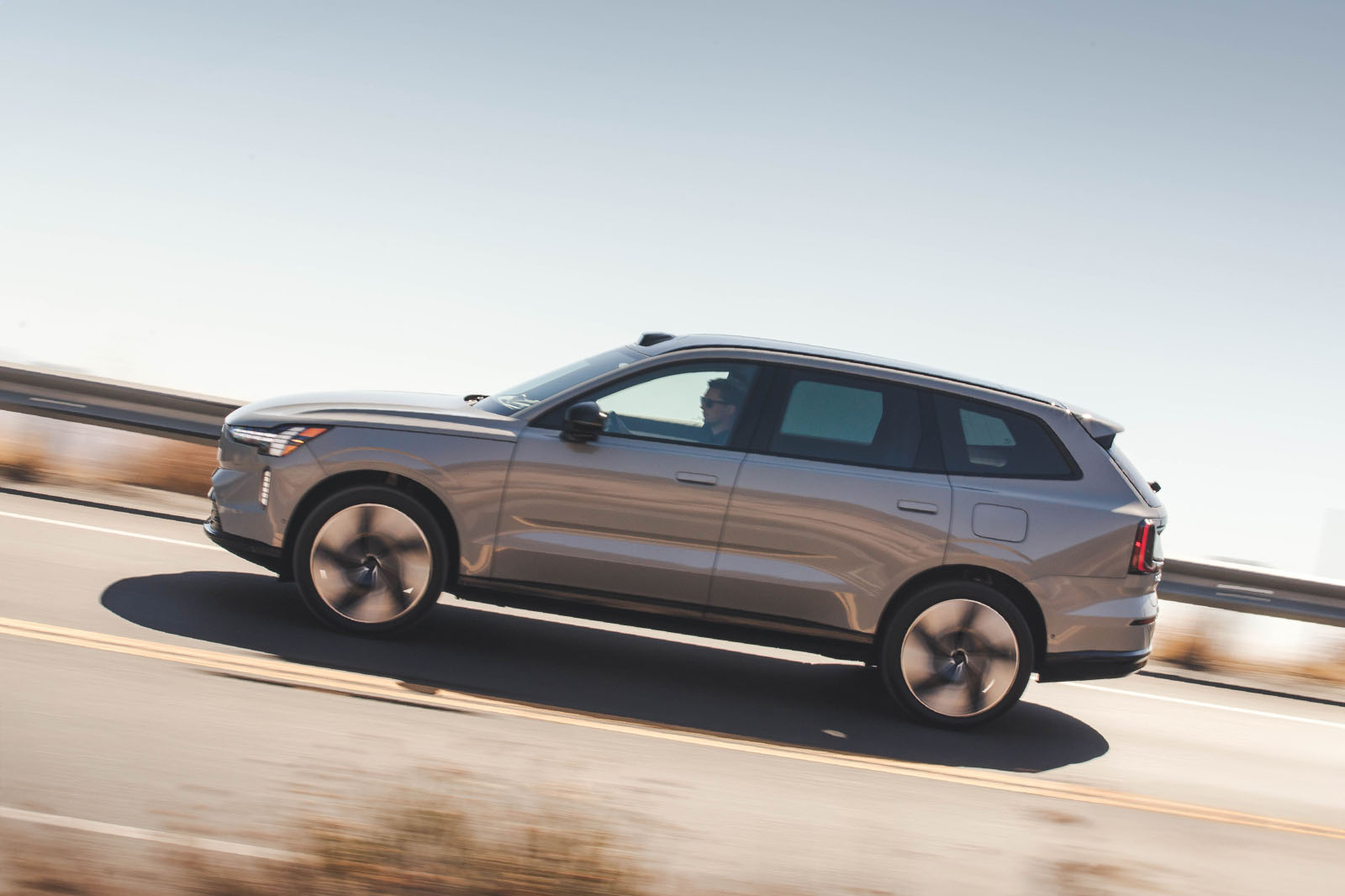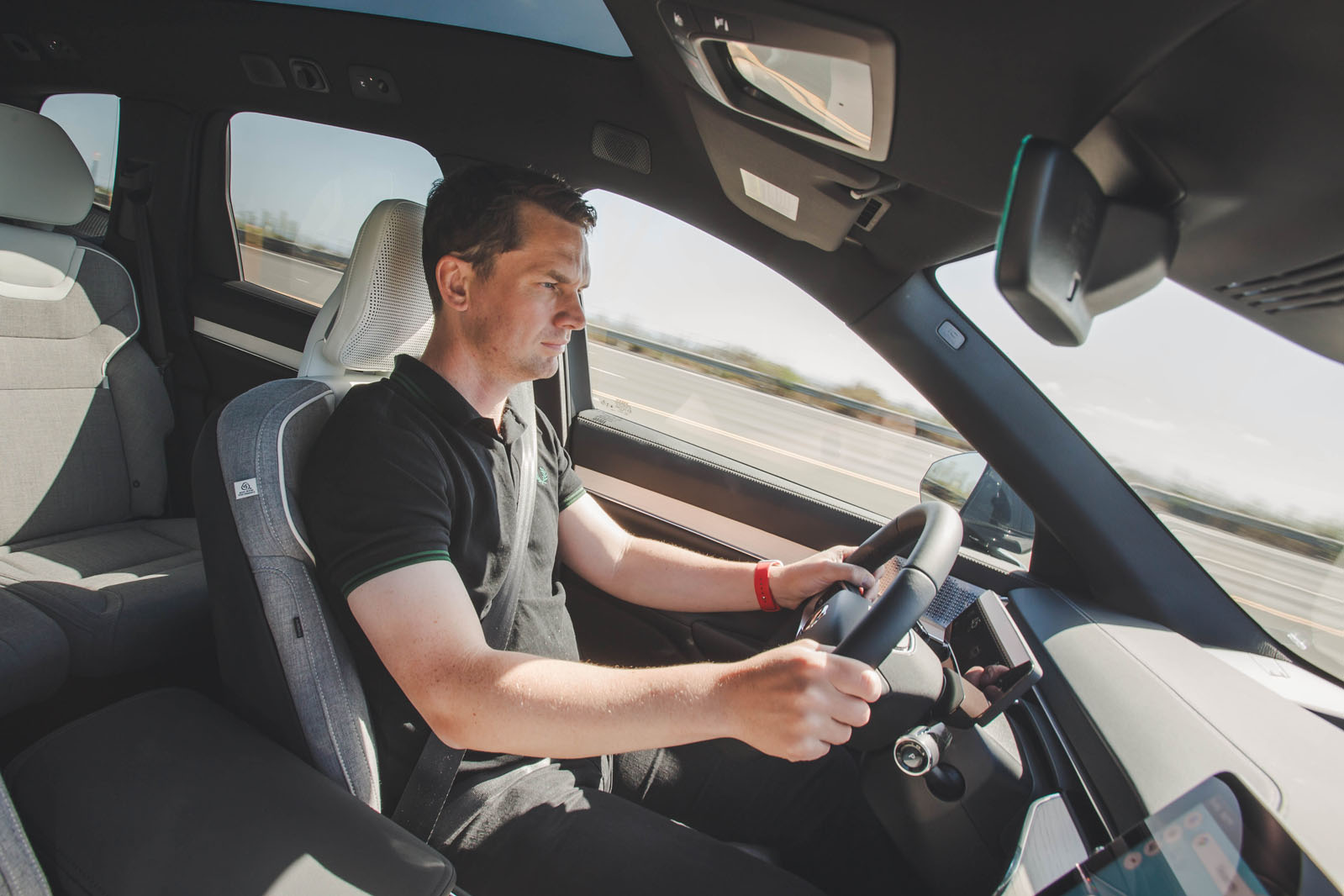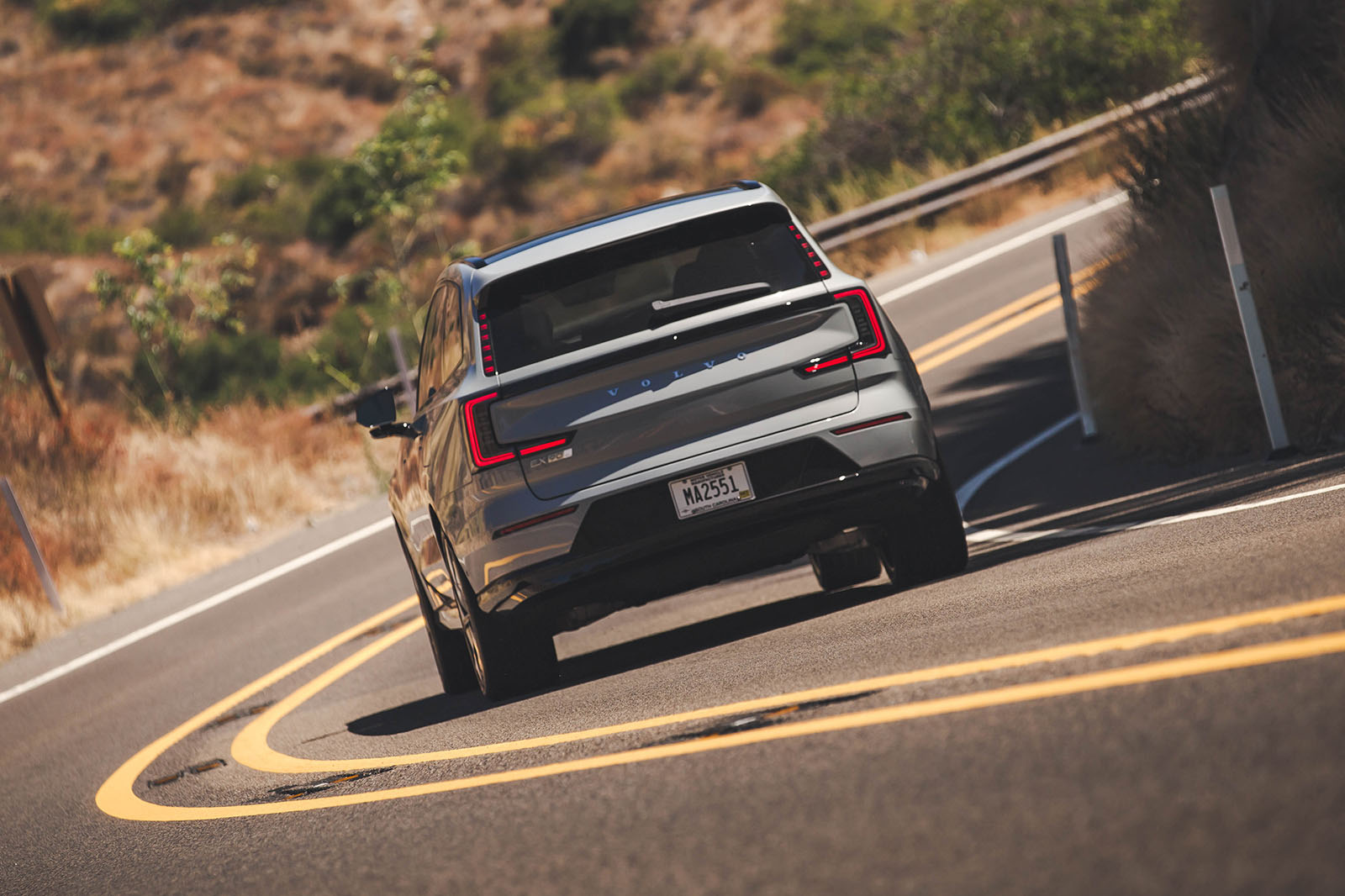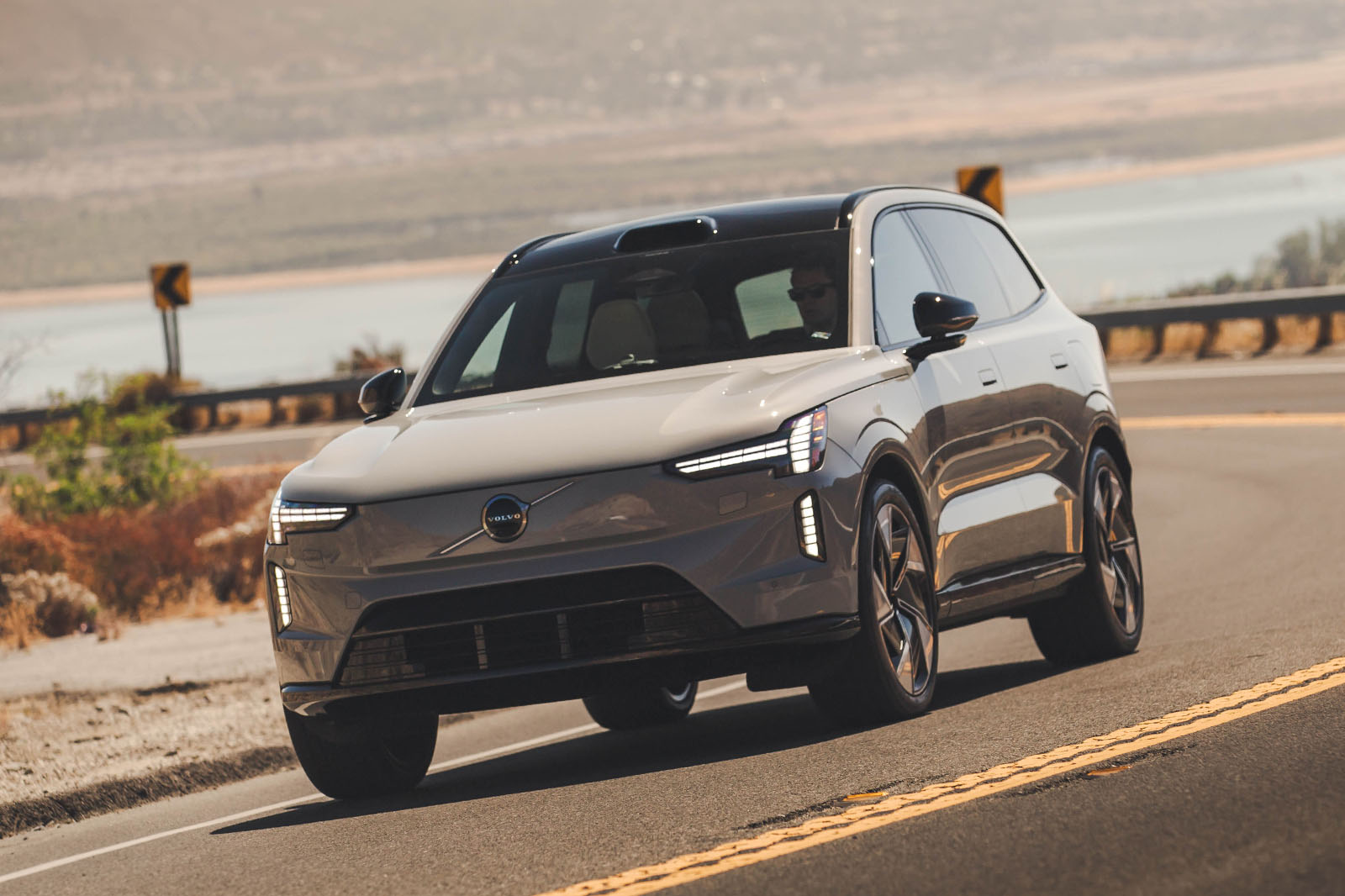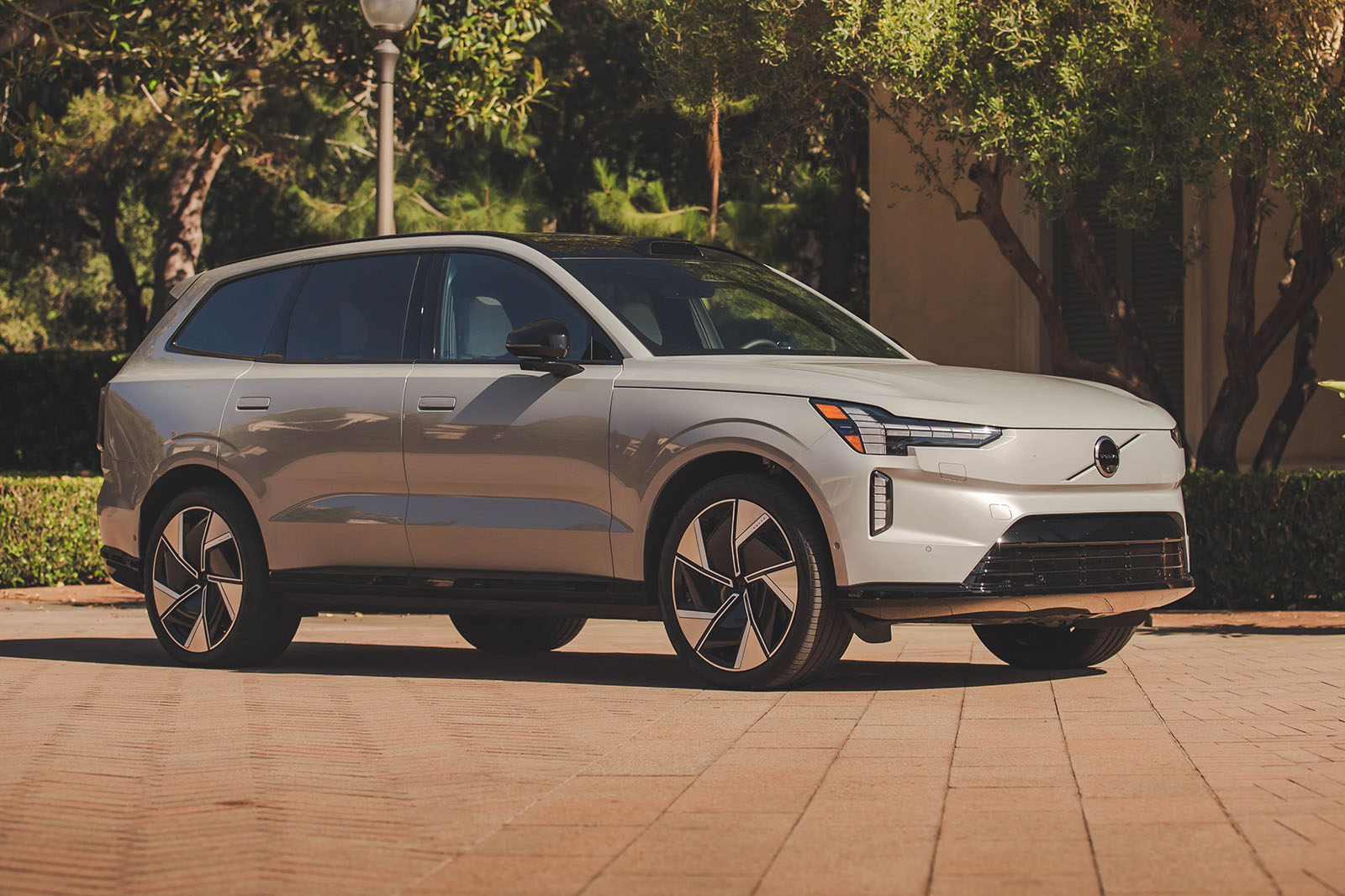New 90-series Volvo SUVs like the Volvo EX90 tend to live long and notable lives.
The first-generation Volvo XC90 was still remarkably popular despite being the oldest car on sale in the UK by the time the second-generation model arrived in 2014, that car ushering in new everything for Volvo under Geely ownership.
Platform, engines, styling: the current XC90 set the tone for the most successful ever era of Volvos that would follow, and like the original car before it, feels like it could go on for some time yet.
And it will, but it will not be the only seven-seat SUV in Volvo’s range anymore. The EX90 is an all-new electric model, and like its range mate ushers in a whole host of new technology and features that will follow on all Volvos in the coming years as the Swedish firm continues apace with its ambition to only offer electric cars by 2030.
For now, the EX90 and XC90 will dovetail but if the XC90 is where Volvo is, the EX90 is where it is going.
In keeping with statement 90-series Volvo SUVs, the EX90 doesn’t arrive simply as an electric version of the XC90. It gets a new bespoke architecture for electric cars called SPA2 that’s got lots of latest EV technology like a whopping-great 111kWh (gross) battery in the floor and twin motors for all-wheel drive and up to 510bhp, but it’s the computing power of this platform that its maker is most proud of, and a future battleground for car makers beyond traditional oily bits.


